Photos: How a Fungal Disease is Disfiguring Snakes
A mysterious fungus is sickening snakes across the Midwest and Eastern United States. The illness, called snake fungal disease, causes a variety of harmful symptoms, including scabs and crusty scales, cloudy eyes and swollen faces. The fungus is usually fatal, but scientists are researching possible treatments, including antifungal medication. [Read full story on Snake fungal disease]
Infected mud snake
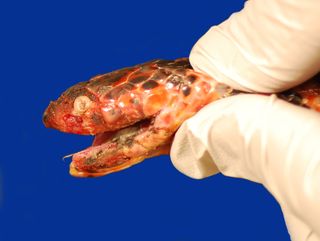
This mud snake, discovered May 28 in Georgia, contracted snake fungal disease, a deadly illness that began infecting snakes in the United States in 2000. (Photo credit: Southeastern Cooperative Wildlife Disease Study.)
White scales
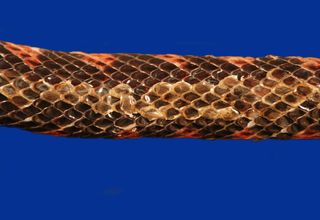
Some of the mud snake's scales turned white and cloudy after the animal caught snake fungal disease. (Photo credit: Southeastern Cooperative Wildlife Disease Study.)
Eastern racer
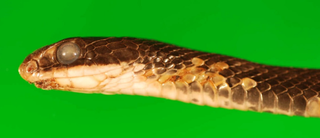
An eastern racer (Coluber constrictor) from Florida that has signs of snake fungal disease, including cloudy eyes, roughened crusty scales on its chin and several discolored roughened scales on the back of its neck. The snake was captured in 2013. (Photo credit: D.E. Green | USGS National Wildlife Health Center.)
Sign up for the Live Science daily newsletter now
Get the world’s most fascinating discoveries delivered straight to your inbox.
Eastern rat snake

This eastern rat snake (Pantherophis alleghaniensis) has opaque eyes and hard, crusty scales on its snout, telltale signs of snake fungal disease. The snake was captured in New Jersey on March 2012. (Photo credit: D.E. Green | USGS National Wildlife Health Center.)
Northern water snake
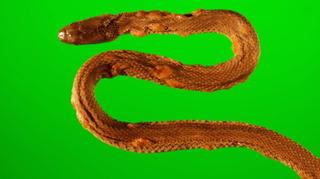
A northern water snake (Nerodia sipedon), which was captured in 2009 from an island in western Lake Erie, Ohio. The snake has crusty and thickened scales over raised blisters, a sign of snake fungal disease. (Photo credit: D.E. Green | USGS National Wildlife Health Center.)
Snake underside
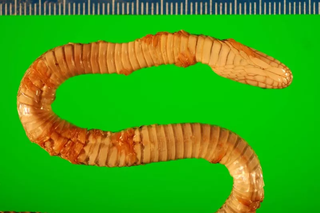
Snake fungal disease also affected the bottom of the northern water snake. The fungus infects both social and solitary snakes, suggesting that they can catch it from each other and from the soil. (Photo credit: D.E. Green | USGS National Wildlife Health Center.)
Pygmy rattlesnake

The body of this pygmy rattlesnake (Sistrurus miliarius), captured in Volusia County, Florida in 2012, has several raised lumps indicative of a fungal disease. Its tail is also covered with roughened and crusty scales. (Photo credit: D.E. Green | USGS National Wildlife Health Center.)
Milk snake
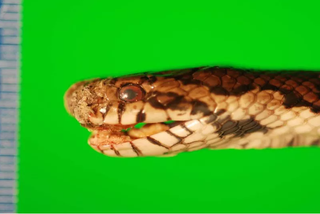
A milk snake (Lampropeltis triangulum) found in Westchester County, New York in 2013, has signs of snake fungal disease. Some experts compare the illness to white nose syndrome in bats because of its severity. (Photo credit: D.E. Green | USGS National Wildlife Health Center.)
Flipped over
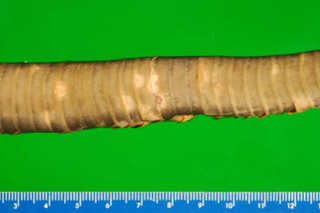
The bottom of this eastern racer has several white spots, which are suggestive of snake fungal disease. The snake was captured in Dutchess County, New York in 2012. (Photo credit: D.E. Green | USGS National Wildlife Health Center.)
Snake side

An eastern rat snake with crusted lateral scales has signs of fungal infection. The snake was captured in Passaic County, New Jersey in 2012. (Photo credit: D.E. Green | USGS National Wildlife Health Center.)
Follow Laura Geggel on Twitter @LauraGeggel and Google+. Follow Live Science @livescience, Facebook & Google+.

Laura is the archaeology and Life's Little Mysteries editor at Live Science. She also reports on general science, including paleontology. Her work has appeared in The New York Times, Scholastic, Popular Science and Spectrum, a site on autism research. She has won multiple awards from the Society of Professional Journalists and the Washington Newspaper Publishers Association for her reporting at a weekly newspaper near Seattle. Laura holds a bachelor's degree in English literature and psychology from Washington University in St. Louis and a master's degree in science writing from NYU.











